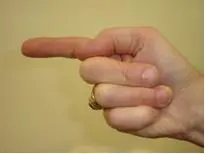
I’ve been to quite a few, various trade shows these last few years, and it seems the subject of FAA inspector variation comes up with some regularity. You know, the stories about how different FAA inspectors interpret the regulations varyingly.
Now, before we proceed any further, I want to state my experience with inspectors whom are not FAA employees, in order to hopefully qualify this blog. While at a major airline, I was at one time in charge of all the inspectors at a huge Maintenance and Engineering Base. The supervisors and inspectors I directed were in Engine Overhaul, Aircraft Overhaul, Components, Receiving, Internal Audit, and NDT. I was also, in an earlier time, a full CASE Level III auditor. I’m still in the Air Force, and I’m on “Red- X” orders, which is equivalent in the civilian world to being an RII (Required Inspection Item) authorized Inspector. I’m also a FAA DAR (Designated Airworthiness Representative; not an FAA employee) for inspection of parts. So, in the non-FAA world I hope you would agree that I’ve been around a lot of inspectors.
Indisputably, as long as humans are involved in processes, there will always be some variation in the product, including inspections or interpretations of written language. When the inspection or interpretation involves a ‘black or white’ issue, the outcome is predictable and variation is minimized. When the issue is ‘gray’ however, things start to get interesting.
THE REAL WORLD:
- A client calls for DAR services. The DAR inspects, and then rejects the client’s product. So the client calls another DAR who signs off. We loosely call this ‘shopping around’ by the client. He’ll do this until he finds someone that will sign off.
- On the hangar floor, your crew just installed a complicated tripler repair on the fuselage of the aircraft. You call the inspection department to send someone over to perform the final inspection and ‘buy-off.’ You cringe when you see inspector Joe walking over to you, because he always finds problems that will delay the completion. You secretly wish that Inspector George would have come by because he is more reasonable. Don’t forget that George likes donuts too.
- Two NDT inspectors see an NDT ‘indication’ on a part being inspected. One insists it’s a crack, the other says it’s a ‘surface imperfection.’ Of course this will be settled with additional testing.
- A customer audit is scheduled. You receive a tip from a friend that the auditor was an NDT inspector in his prior position. During the audit he hammers you on your NDT department, but does just a cursory review your ESD procedures. Shocking.
- You are about to install a part on an engine being overhauled. You notice the part’s color is not the same as other parts you’ve installed. Your suspicions are confirmed when it is discovered the part is a counterfeit unapproved part. The quarantined paperwork shows the counterfeiters did a good job with the paper work and packaging, with the exception that the manufacturer’s famous logo has its eagle pointed the wrong way. Numerous inspectors and handlers of the part did not notice this apparently obvious error. This was an actual SUP; widely discussed in the industry.
- Two visual inspectors inspect roller bearings. The written inspection procedures require a detailed visual inspection. One inspector performs the inspection word for word. The other speeds through it, but insists he can detect bearing problems by listening for noise while rotating the bearing. Quantify that!
- A customer’s auditor audits your operation. You meet all the requirements of the published standard being used by the auditor, but he writes you up because your reject tags are not the color red (they are manila colored). In his opinion this is an “industry standard”. Wazzat?
By now I’m sure a few of you have smiled wryly at these or similar experiences. In fact, variations exist in all aspects of aviation; Commercial, General Aviation, Military, and Government. Because of this, it upsets me that some people speak of FAA inspector variations as if it were a behavior peculiar to them exclusively. If such critics would couch their desire to minimize variations in the broader sense, to include all inspectors and auditors (not just FAA), it would represent a more balanced and noble effort. But noooooooooo, let’s go out there and pick on a narrow segment of our industry.
Some more personal experiences: During my career I’ve worked with about 5 FAA FSDOs and MIDOs. Without question, their level of standardization is infinitely more impressive than the complaints expressed at some trade shows.
I heard a Pastor say one time that when you point your finger at someone, there’s three pointing back at you, hmmm.

